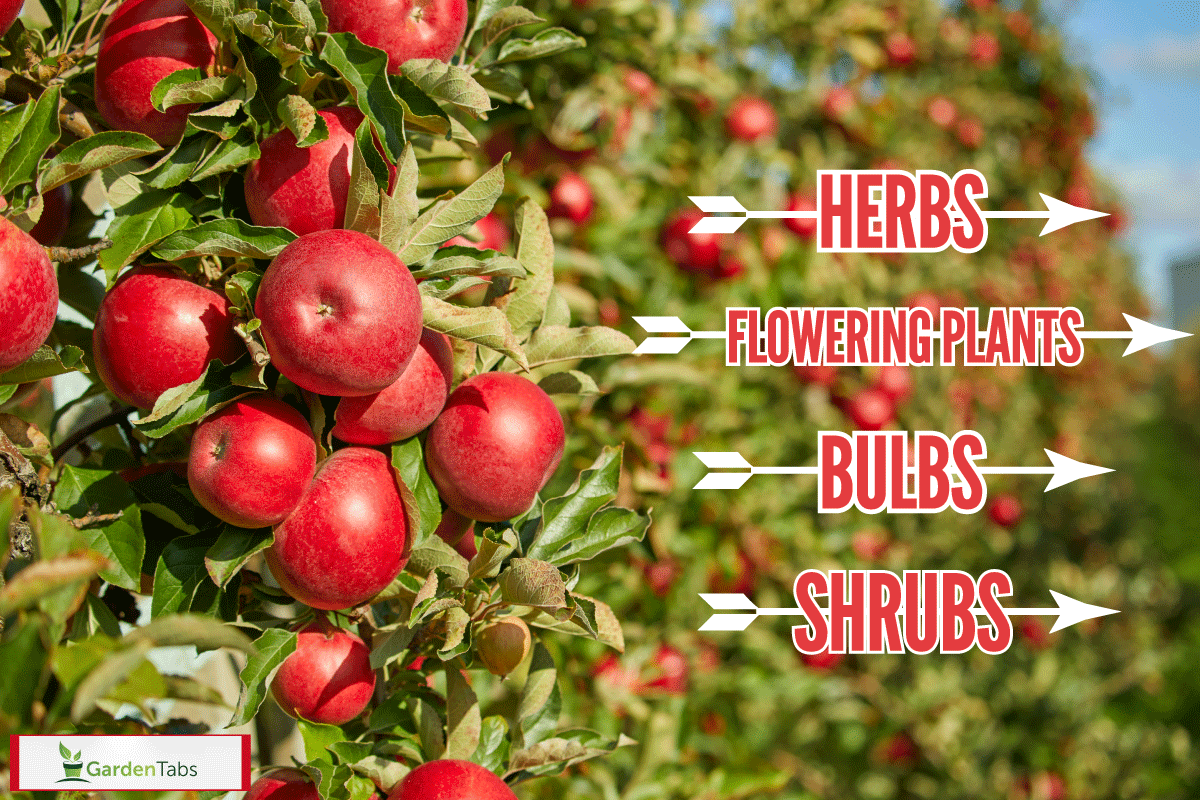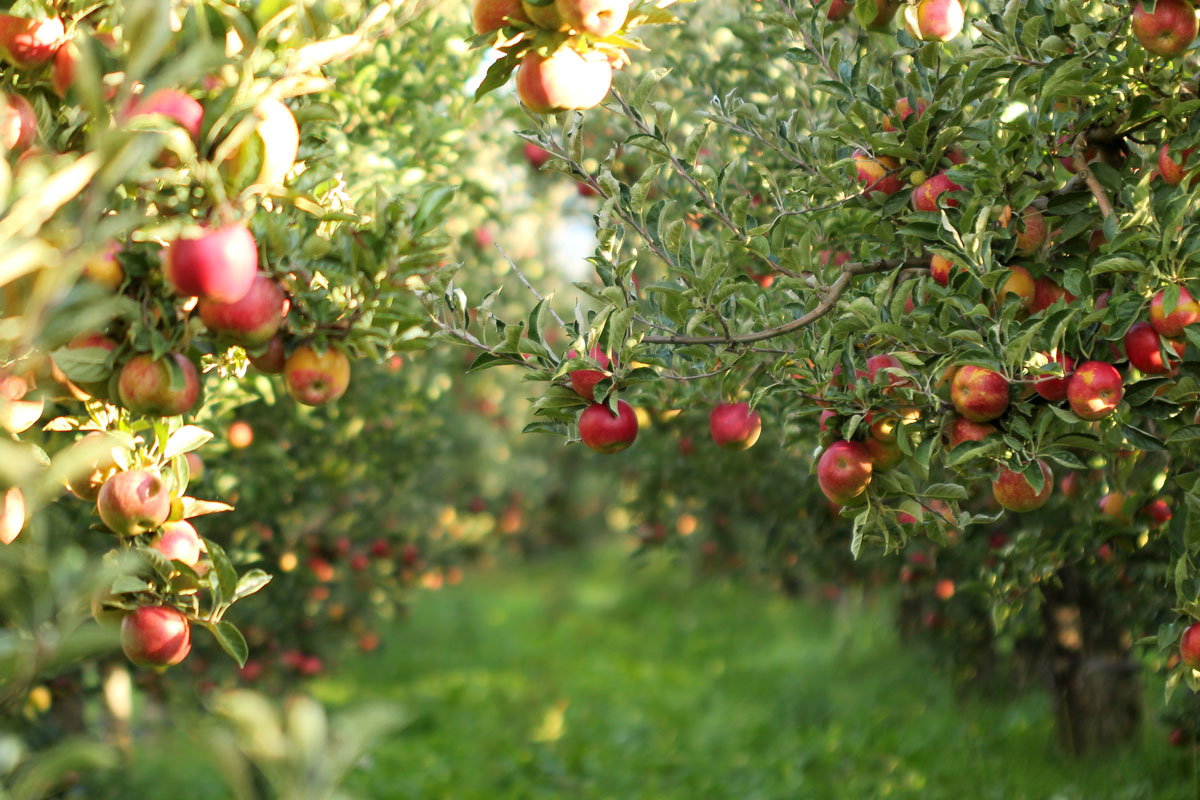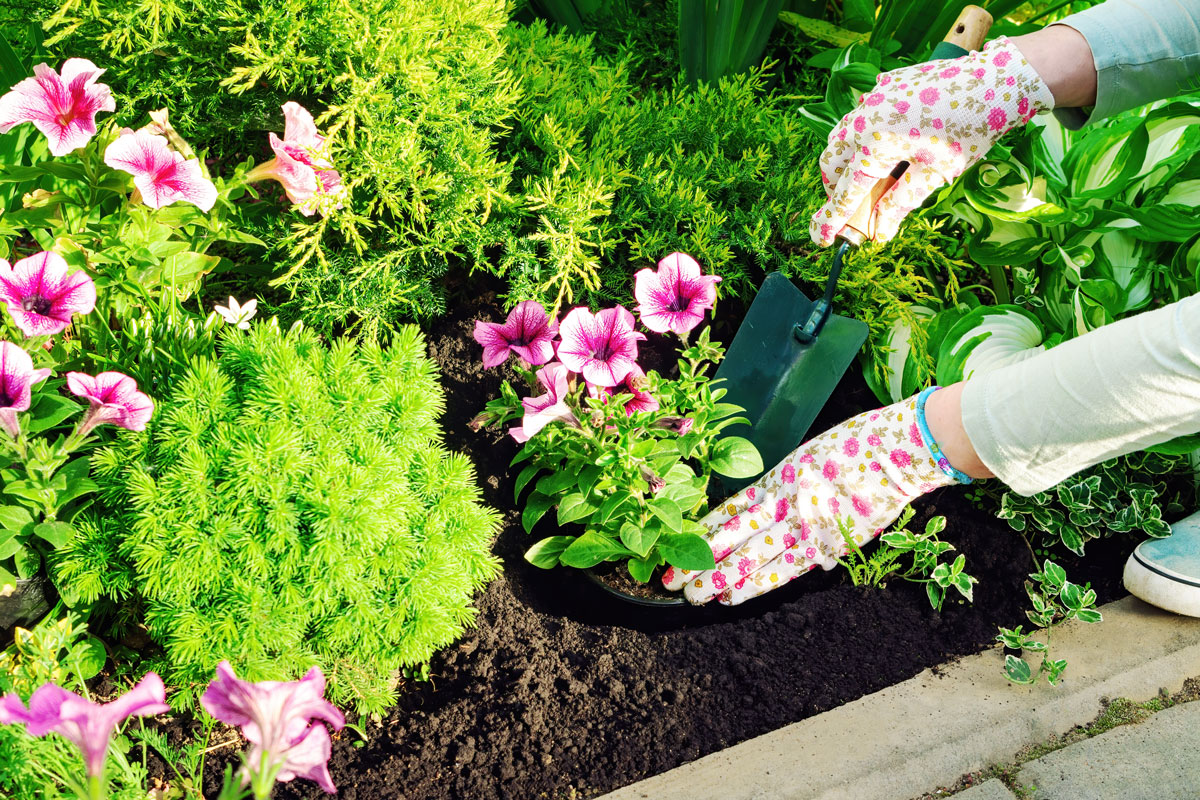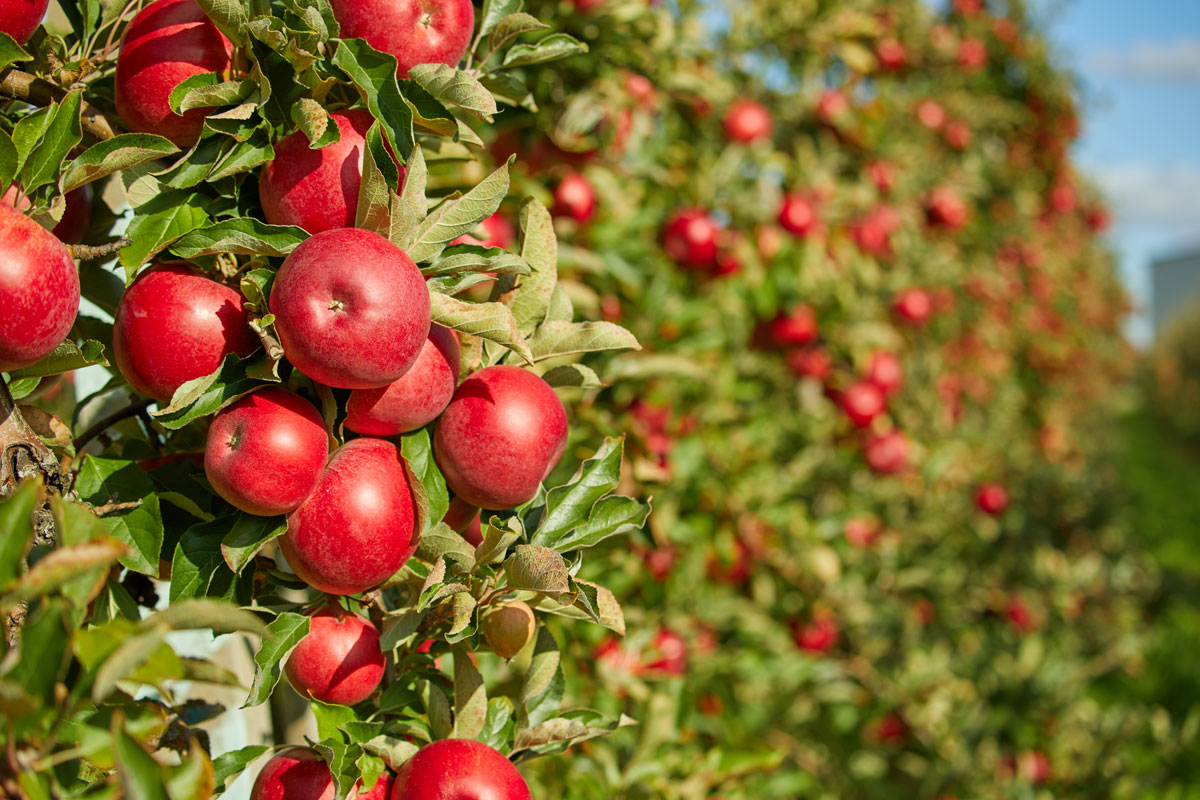Fruit-bearing trees must be cultivated with certain kinds of plants to keep them healthy and protected. Techniques were devised and practiced to achieve a mini-ecosystem that maintains and optimizes the environment. We have researched every aspect you need to know about building a biological community for your apple tree.
A varied combination of herbs, flowering plants, bulbs, and shrubs can be cultivated under apple trees to provide nutrition, draw in important living organisms, repel parasites and prevent weed proliferation.
Apple trees and the plants under and around them are part of an ecosystem referred to as a guild. Generally, the plants coexist and function to optimize the environmental conditions, making them beneficial to the tree. The common species and their effects are in the succeeding text to help you identify which plants best suit your needs and preference.

Ecosystem, Permaculture, And Fruit Tree Guild
Ecosystem
An ecosystem is a biological community of interacting organisms that live and benefit from the existence of each other in a specific environment. An ecosystem is composed of two basic components, biotic and abiotic.
Biotic, meaning possessing life, are the living counterpart of the system including animals, plants, and microorganisms. Abiotic refers to the characteristics and features of the physical environment such as general climate, temperature, and humidity range, concentration, and availability of nutrients, and acidity levels.
The balance between the environment and the living organisms determines the survival and continued existence of the ecosystem.

Permaculture
The basic principle of permaculture involves adopting relationships in naturally occurring ecosystems and modeling or reproducing them on a smaller but identical scale. Historically, the concept developed due to massive deforestation, plow agriculture, and erosion due to the widespread development of farming.
Planting tree fruits and nuts as crops with supplementary plants around the central growth stabilized water sheds and restored soil health and optimal nutrient content. Though not considered an exact agricultural science, permaculture has gained popularity due to the demonstrable change it has created in small-scale farms and residential gardens.
Fruit Tree Guild
A tree guild is a permaculture method of planting fruit-bearing plants that are supplemented with surrounding flora, referred to as underplants, to maximize the production and yield. It applies the same principle of developing ecosystems that optimize plant growth and ideal environmental factors to develop a self-sustaining atmosphere.
The development of permaculture fruit tree guilds came about by observing how a certain group of plants naturally grow together in nature. The fruit tree or central element benefits from the surrounding plants because they fertilize, create mulch, attract beneficial insects, repel pests and critters and suppress weed and grass growth.
Categories And Functions Of Underplants
Underplants support, complement, and optimize the development of your apple trees. They are categorized based on the specific effects and benefits that influence the growth and overall health and productivity of the trees.
Accumulators
Accumulators are plants that have deep-seated roots and are capable of harvesting nutrients available underneath the soil and transporting them to the surface. They absorb potassium, magnesium, sulfur, and other minerals and release them into the surrounding region for other plants to use.
Artichoke, borage, comfrey, dandelions, plantain, and yarrow are excellent species that deposit and increase nutrients in the soil.
Attractors
Attractors are a group of plants that attract beneficial insects which increase pollination and consequently, fruit production. The principle is relatively simple. Flowering plants attract insects that feed on pests like aphids, caterpillars, beetles, and flies.
They protect your tree from infestation and increase its production at the same time. Bee balm, dill, fennel, coriander, and dandelions naturally attract and draw useful insects into the ecosystem. Insects that benefit apple trees include ladybugs, lacewings, hoverflies, wasps, damsel bugs, and bees.
Fixers Or Fertilizers
Fixers are plants that absorb nitrogen from the air and deposit them into the soil making it available for nutrient use. Apart from sunlight and water, nitrogen is the most essential element for plant growth mainly due to its role in photosynthesis.
Nitrogen fixers include comfrey, dandelion, yarrow, white clover, lupine, alfalfa, peas, and bee balm. They naturally improve soil fertility and organic content without the use of synthesized fertilizers and additives.
Mulches
Mulch is a layer of material applied to the surface of the soil. Primarily, it retains moisture and regulates the temperature around the base of your tree.
The decomposition process which involves the mulching material and microorganisms results in the release of essential nutrients beneficial to the tree and surrounding plants.
Dried leaves, wood byproducts, and organic compost best comprise the biomass for mulch. The specific plants commonly used include comfrey, artichoke, clover, rhubarb, and pea shrub.
Suppressors
Grass and weeds grow rapidly and compete for important elements in the soil. Suppressors act and function to prevent their growth so the nutrients benefit only the tree and surrounding plants. Rhubarb, mint, clover, and bulbs like onion, garlic, and leeks cover and shade out the soil and suppress grass and weed growth.
Repellers

Repeller plants emit strong scents that drive off insects and animals harmful to the tree guild. Beetles, moths, and other pests feed on leaves and can defoliate the tree entirely. Some burrow into the fruit and spoil a large part of the harvest.
Rabbits and deer ruin newly planted apple trees, feed on older ones, and strip and damage the bark, making it vulnerable to other pests and parasites. Garlic, marigold, wormwood, chives, and chrysanthemum are effective in repelling critters.
How To Pick And Combine Plants Underneath Apple Trees
The variety of numerous plant choices may seem overwhelming, but this is the part where your preference applies. Certain growths have multiple effects, so this lessens the amount of plants required to create the ideal environment.
Consider the six general categories of underplants and make sure you have one for each function. Finally, plant those that are suited to your liking, flowers for aesthetics, edibles for practicality and use, herbs for health reasons, and seasoning.
The most important consideration is that you enjoy and benefit from the look, combination, and output of the plants.
What To Consider When Planning And Building Your Guild
There are several things you must consider when starting a tree guild. These considerations will help maintain the balance within your mini-ecosystem.
Observe And Experiment

Permaculture guilds are not particularly direct instructions you have to follow, they are merely guidelines about the best techniques and plant combinations you have to use. Observing the area and experimenting with various plants or shrubs is always essential.
At the onset of your project, look around your neighborhood and monitor different vegetation growing in one area. In some instances, these assortments are successful in one environment while it fails to work in others.
You can try using comfrey, dandelion, and white clover to balance the nitrogen content of the soil. You can also combine comfrey with nasturtiums to provide mulch. Growing grass under young apple trees will inhibit the plant's growth because it will have to compete with the grass for nutrients.
Consider The Season Or Climate
Grow underplants that will do well in the climate you are settled in. Changing of the seasons may affect the overall structure of your guild. For instance, dandelions are attractors that cannot survive the cold season. Use dill as a replacement because it can actually survive cool weather up to 25 degrees Fahrenheit.
You could use clovers as suppressors during winter as an alternative to other underplants with this classification. Here are lists of plants that thrive well in each season:
Winter Or Cold Weather
- Dill
- Yarrow
- White Clover
Spring
- Fennel
- Bee Balm
- Comfrey
- Dandelion
- Nasturtiums
- Garlic Chives
Summer
- Bee Balm
- Comfrey
- Dandelion
- Yarrow
- Nasturtiums
Fall
- Dill
- Nasturtiums
- White Clover
- Garlic Chives
Plant Arrangement

Remember to leave a considerable space in between the underplants so that they can grow and mature without the need to compete for space and nutrients. Place deep rooting plants such as dandelions and comfrey closest to the tree because they would not struggle or rival for nutrients with the shallow roots of the apple tree.
Cultivating plants that need to be eventually dug up inside the dripline of the apple tree is not recommended because excavating within this line could harm the root system of the tree. The dripline refers to the area within the circumference of the tree or within the shadow it casts.
In Closing

Building your guild requires underplants that relatively complement each other while performing their specific functions in keeping your apple tree healthy and protected. We hope you have found this article helpful and informative. Happy planting!
If you enjoyed this post, you might also like to read these:
